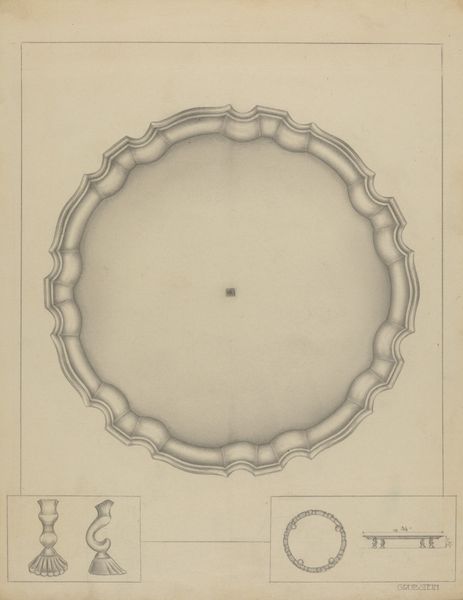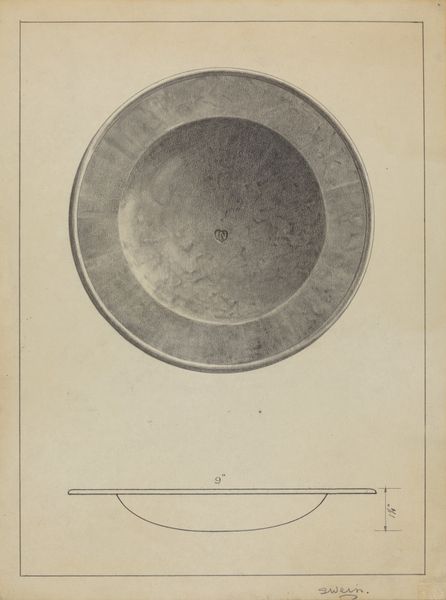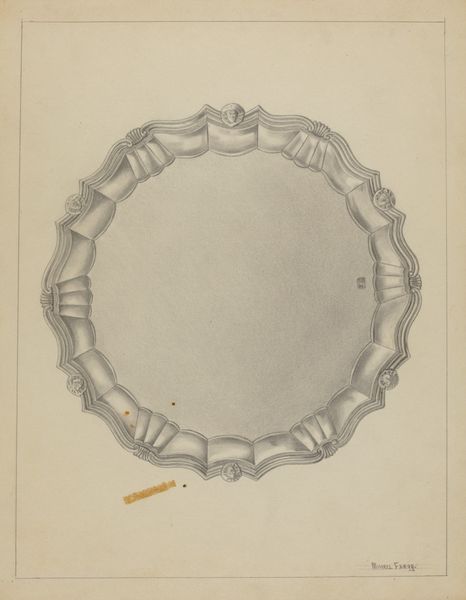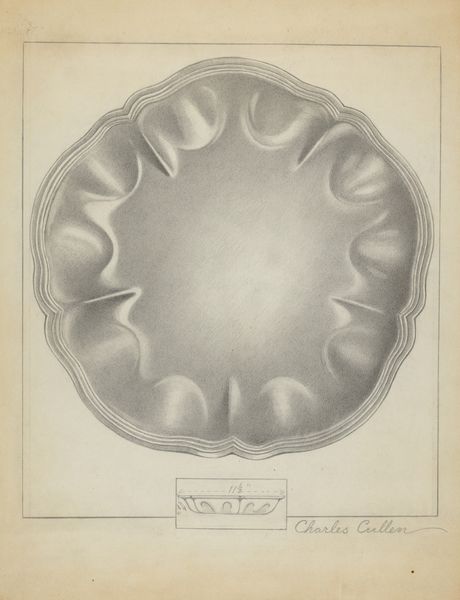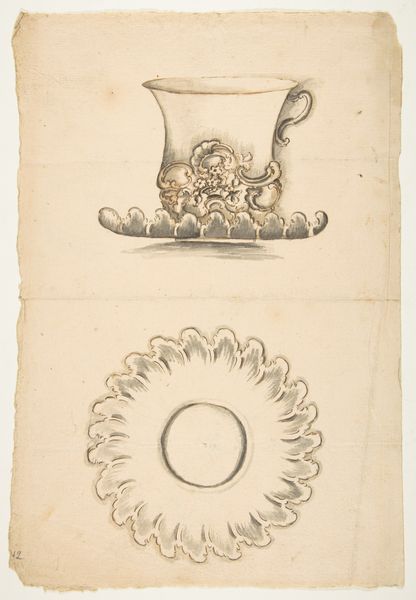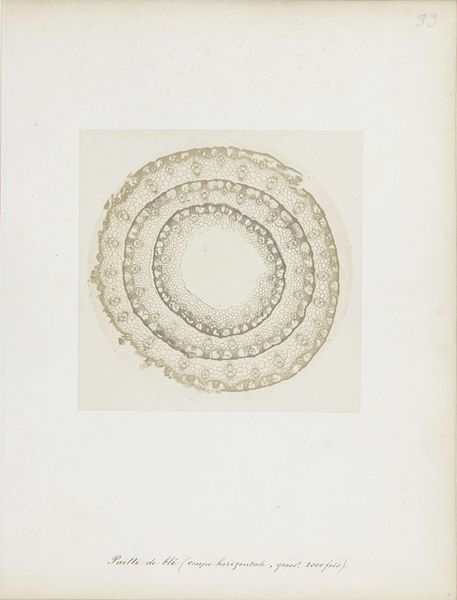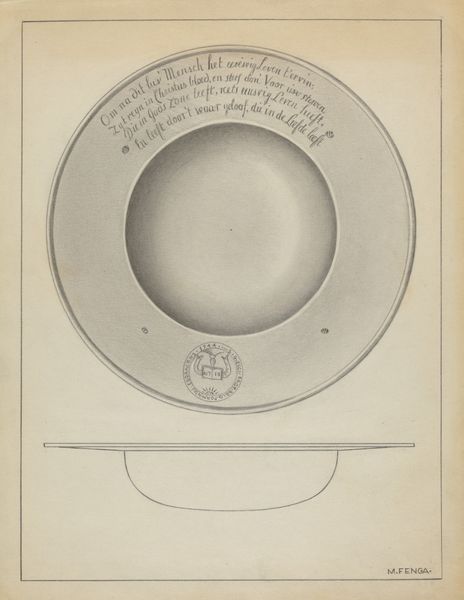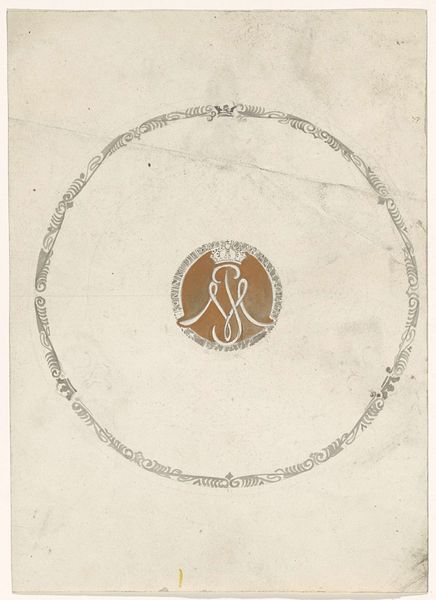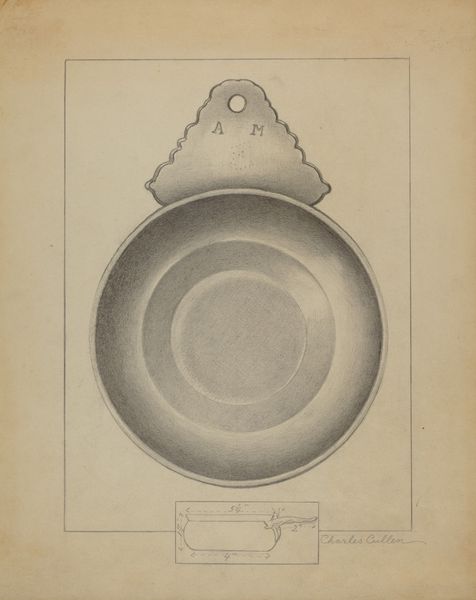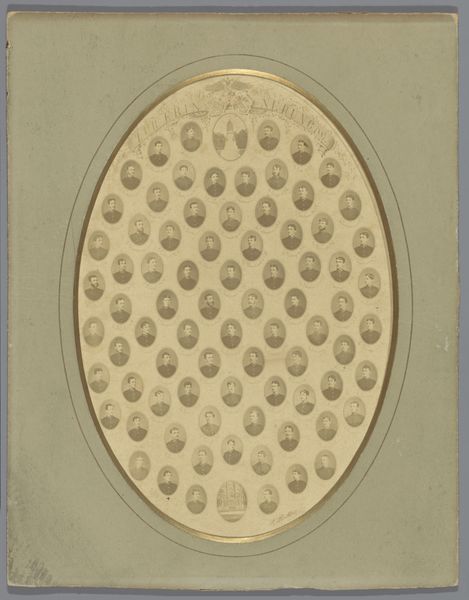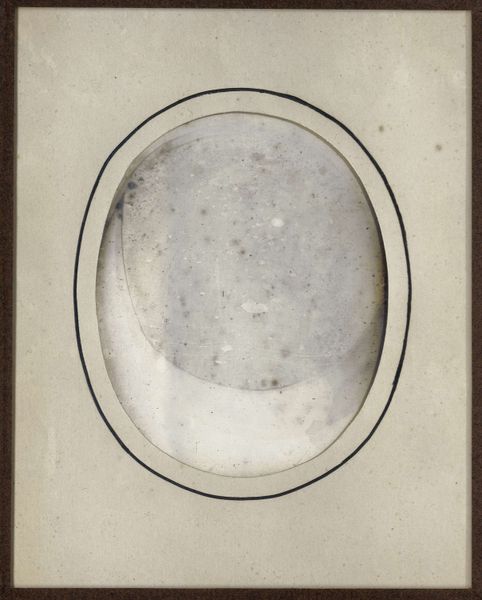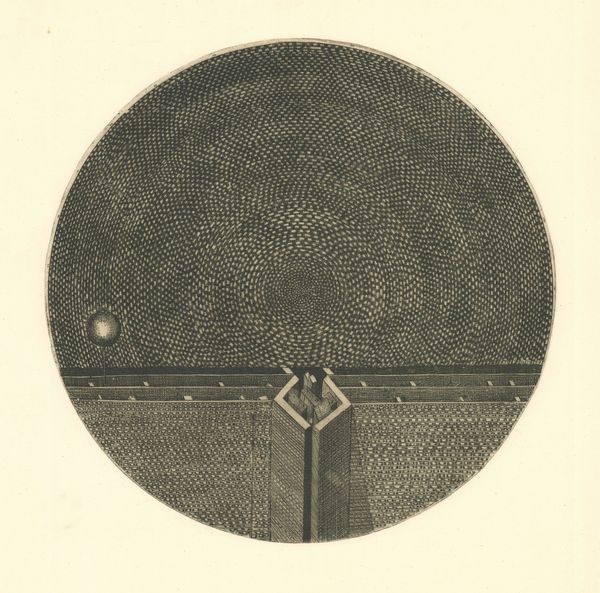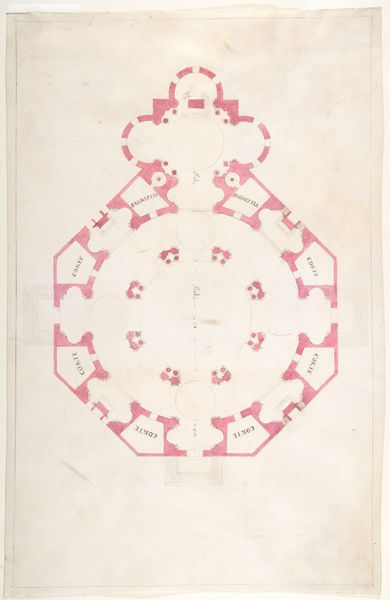
drawing, print, pencil
#
drawing
# print
#
pencil
#
decorative-art
Dimensions: 10 1/8 x 13 3/16 in. (25.7 x 33.5 cm)
Copyright: Public Domain
Editor: Here we have an intriguing piece titled "Design for a Plate," created anonymously between 1765 and 1795. It's rendered in pencil, as both a drawing and a print. There's a subtle elegance in the simplicity. How do you see this design speaking to its historical moment? Curator: It’s tempting to see this as *just* a plate design, but look closer. The late 18th century was a hotbed of social upheaval. The delicate nature of this plate’s design, with its fragile, repetitive cut-outs, exists in stark contrast to the burgeoning industrial revolution. Could it be a subtle commentary on the disappearing artisanal traditions, and perhaps even anxieties around class structures of the era? Think of Marie Antoinette and her famously excessive tableware against the backdrop of immense poverty. Where do you think this design fits within that spectrum of excess and lack? Editor: That's a compelling point; I hadn't considered the socio-political contrast. The delicate cut-outs could represent fragility in the face of change. Was there a movement to preserve artistic traditions in this era, a rebellion against industrialization through art? Curator: Precisely. While not a unified 'movement,' many artists and designers consciously maintained traditional craftsmanship as a form of resistance. They were upholding aesthetic and ethical values threatened by mass production. The intimate act of creating something by hand, imbued with unique character, becomes an inherently political statement when contrasted with the anonymity of factory-made goods. What message does this plate offer, as a canvas for displaying food, potentially mediating wealth and social disparities, too? Editor: I now see so many layers that weren't apparent at first glance. Considering it as a commentary on craftsmanship and class really enriches the experience. Curator: Exactly! Art objects are rarely isolated creations; they participate in ongoing conversations about identity, power, and the changing world. Hopefully, this exploration helps us consider how objects and social context interact.
Comments
No comments
Be the first to comment and join the conversation on the ultimate creative platform.
